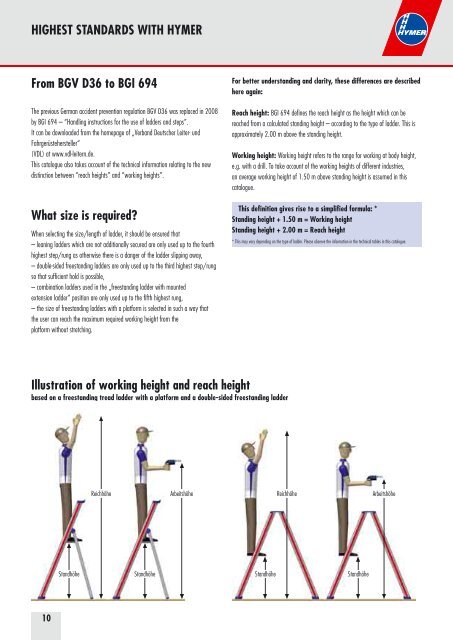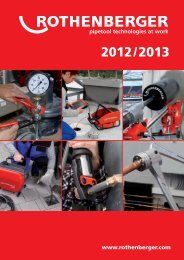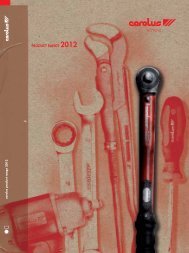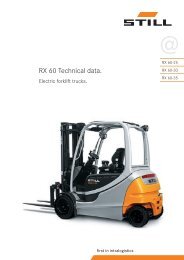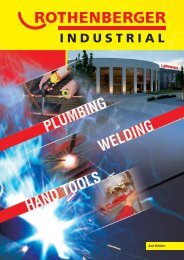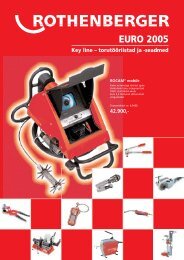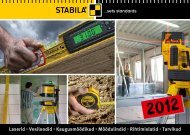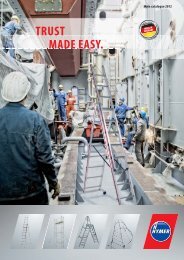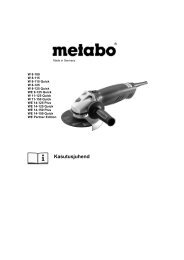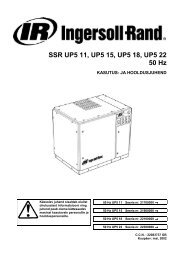Professional ladders and towers for industry and trade
Professional ladders and towers for industry and trade
Professional ladders and towers for industry and trade
You also want an ePaper? Increase the reach of your titles
YUMPU automatically turns print PDFs into web optimized ePapers that Google loves.
HIGHEST STANDARDS WITH HYMER<br />
From BGV D36 to BGI 694<br />
The previous German accident prevention regulation BGV D36 was replaced in 2008<br />
by BGI 694 – “H<strong>and</strong>ling instructions <strong>for</strong> the use of <strong>ladders</strong> <strong>and</strong> steps”.<br />
It can be downloaded from the homepage of „Verb<strong>and</strong> Deutscher Leiter- und<br />
Fahrgerüstehersteller“<br />
(VDL) at www.vdl-leitern.de.<br />
This catalogue also takes account of the technical in<strong>for</strong>mation relating to the new<br />
distinction between “reach heights” <strong>and</strong> “working heights”.<br />
What size is required?<br />
When selecting the size/length of ladder, it should be ensured that<br />
– leaning <strong>ladders</strong> which are not additionally secured are only used up to the fourth<br />
highest step/rung as otherwise there is a danger of the ladder slipping away,<br />
– double-sided freest<strong>and</strong>ing <strong>ladders</strong> are only used up to the third highest step/rung<br />
so that sufficient hold is possible,<br />
– combination <strong>ladders</strong> used in the „freest<strong>and</strong>ing ladder with mounted<br />
extension ladder“ position are only used up to the fifth highest rung,<br />
– the size of freest<strong>and</strong>ing <strong>ladders</strong> with a plat<strong>for</strong>m is selected in such a way that<br />
the user can reach the maximum required working height from the<br />
plat<strong>for</strong>m without stretching.<br />
For better underst<strong>and</strong>ing <strong>and</strong> clarity, these differences are described<br />
here again:<br />
Reach height: BGI 694 defines the reach height as the height which can be<br />
reached from a calculated st<strong>and</strong>ing height – according to the type of ladder. This is<br />
approximately 2.00 m above the st<strong>and</strong>ing height.<br />
Working height: Working height refers to the range <strong>for</strong> working at body height,<br />
e.g. with a drill. To take account of the working heights of different industries,<br />
an average working height of 1.50 m above st<strong>and</strong>ing height is assumed in this<br />
catalogue.<br />
This definition gives rise to a simplified <strong>for</strong>mula: *<br />
St<strong>and</strong>ing height + 1.50 m = Working height<br />
St<strong>and</strong>ing height + 2.00 m = Reach height<br />
* This may vary depending on the type of ladder. Please observe the in<strong>for</strong>mation in the technical tables in this catalogue.<br />
Illustration of working height <strong>and</strong> reach height<br />
based on a freest<strong>and</strong>ing tread ladder with a plat<strong>for</strong>m <strong>and</strong> a double-sided freest<strong>and</strong>ing ladder<br />
Reichhöhe Arbeitshöhe Reichhöhe<br />
Arbeitshöhe<br />
St<strong>and</strong>höhe St<strong>and</strong>höhe St<strong>and</strong>höhe St<strong>and</strong>höhe<br />
10


